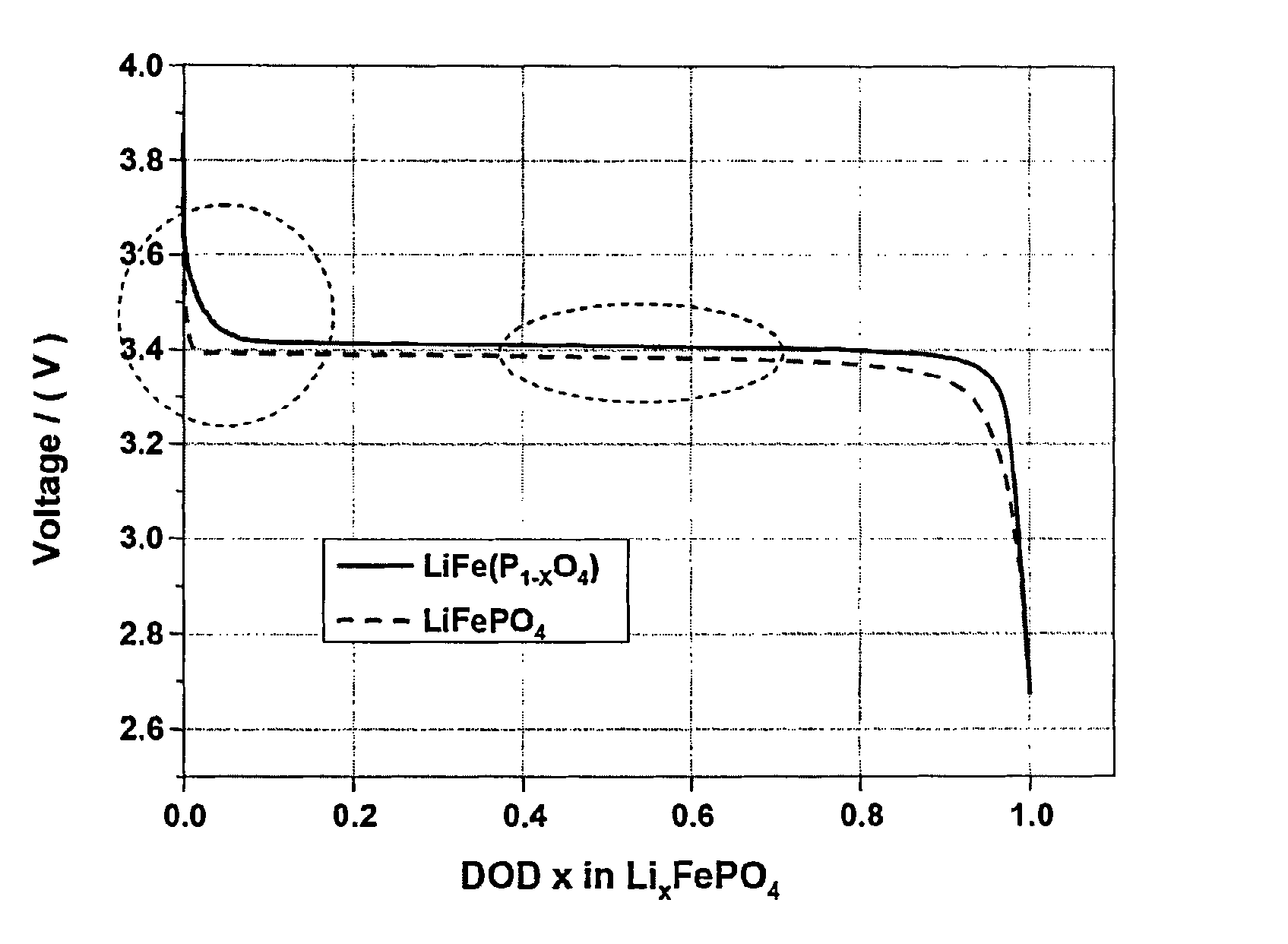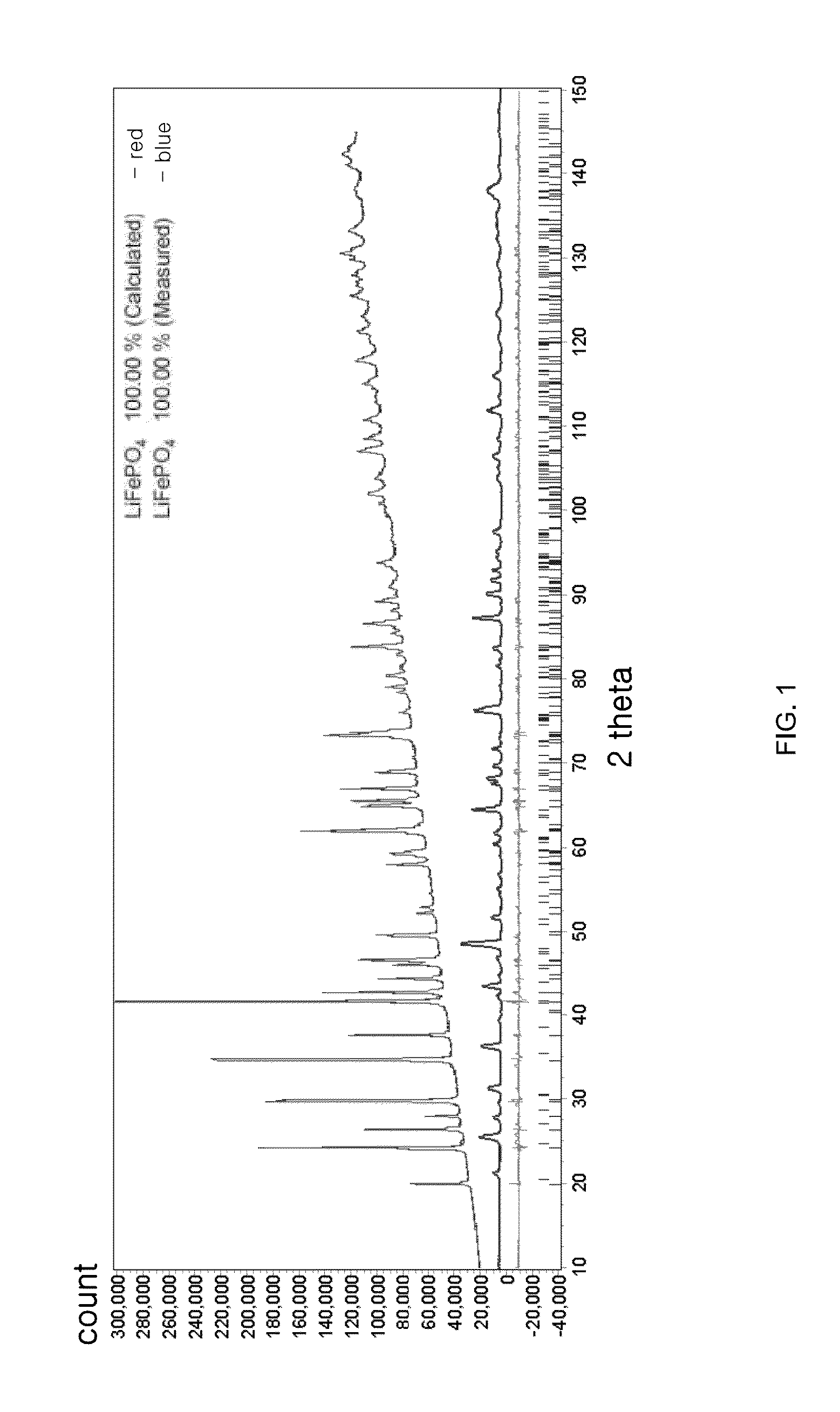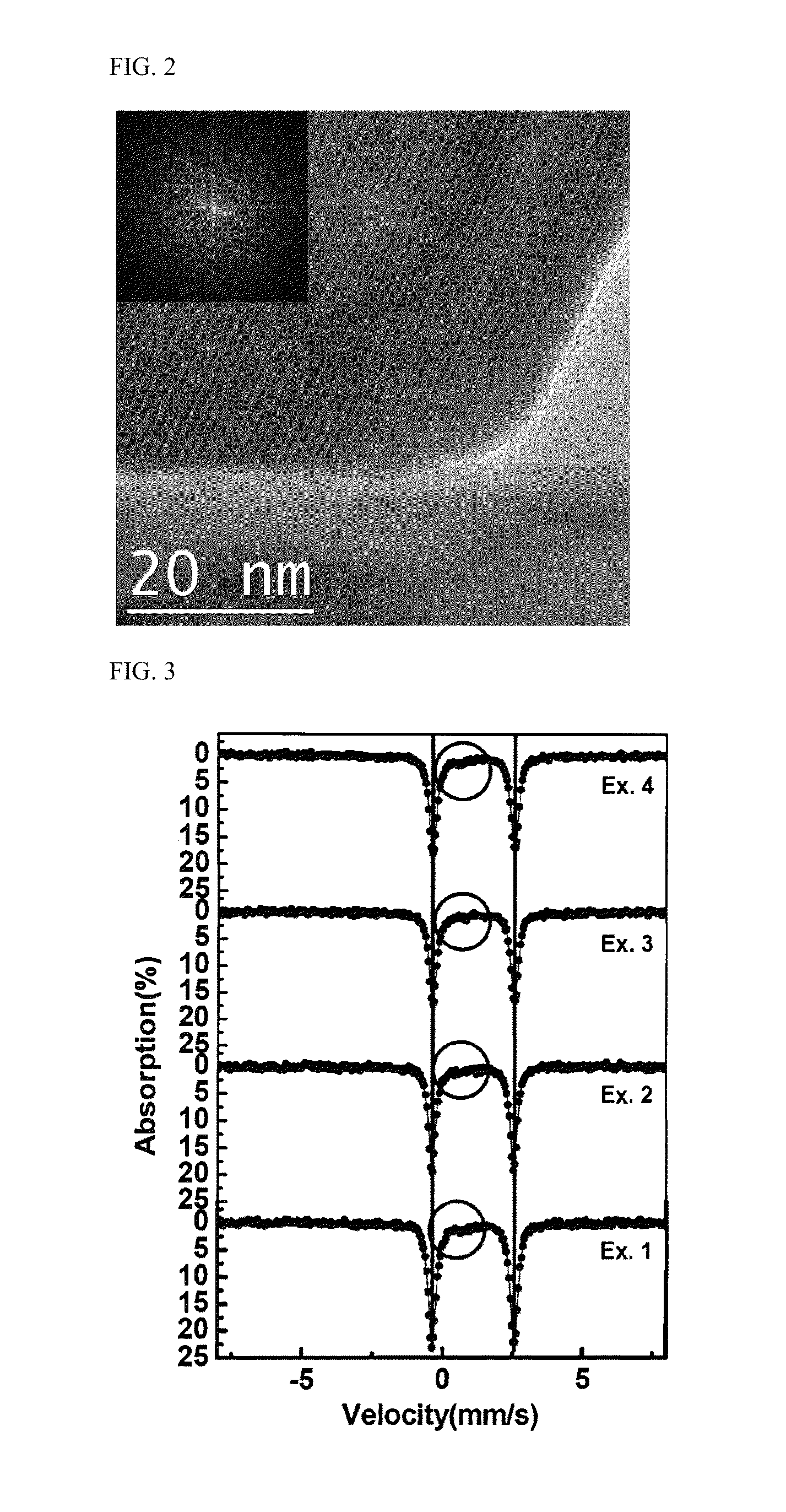Cathode active material providing improved efficiency and energy density of electrode
a technology of cathode active material and energy density, which is applied in the direction of cell components, secondary cell maintenance/maintenance, maintenance/maintenance of primary cells, etc., can solve the problems of limited mass-use as a power source for electric automobiles, low stability, and high cos
- Summary
- Abstract
- Description
- Claims
- Application Information
AI Technical Summary
Benefits of technology
Problems solved by technology
Method used
Image
Examples
example 1
[0106]90% by weight of LiFeP0.94O4 prepared in Preparation Example 1, as the cathode active material, 5% by weight of Super-P as a conductive material and 5% by weight of PVdF as a binder were added to N-methyl-2-pyrrolidone (NMP) to prepare a cathode mixture slurry. The cathode mixture slurry was coated on one surface of an aluminum foil, followed by drying and pressing, to fabricate a cathode.
[0107]95% by weight of carbon as an anode active material, 1.5% by weight of Super-P as a conductive material and 3.5% by weight of PVdF as a binder were added to NMP as a solvent, to prepare an anode mix slurry. The anode mix slurry was coated on one surface of an aluminum foil, followed by drying and pressing, to fabricate an anode.
[0108]An electrode assembly was fabricated by laminating the cathode and the anode using Cellguard™ as a separator and a lithium non-aqueous electrolyte containing 1M LiPF6 in a cyclic and linear carbonate mix solvent was added to the electrode assembly to fabric...
example 2
[0109]A battery was fabricated in the same manner as in Example 1 except that LiFeP0.96O4 prepared in Preparation Example 2 was used as the cathode active material.
example 3
[0110]A battery was fabricated in the same manner as in Example 1 except that LiFeP0.97O4 prepared in Preparation Example 3 was used as the cathode active material.
PUM
| Property | Measurement | Unit |
|---|---|---|
| porosity | aaaaa | aaaaa |
| mean particle diameter | aaaaa | aaaaa |
| mean particle diameter | aaaaa | aaaaa |
Abstract
Description
Claims
Application Information
 Login to View More
Login to View More - R&D
- Intellectual Property
- Life Sciences
- Materials
- Tech Scout
- Unparalleled Data Quality
- Higher Quality Content
- 60% Fewer Hallucinations
Browse by: Latest US Patents, China's latest patents, Technical Efficacy Thesaurus, Application Domain, Technology Topic, Popular Technical Reports.
© 2025 PatSnap. All rights reserved.Legal|Privacy policy|Modern Slavery Act Transparency Statement|Sitemap|About US| Contact US: help@patsnap.com



